How to Assess Tire Quality in Your Rental Car: Ensuring a Smooth and Safe Drive
When you’re renting a car, it’s natural to focus on its make, model, or features like GPS and Bluetooth. But often overlooked and equally crucial to your trip’s safety and comfort are the tires. Tires impact everything from fuel efficiency to vehicle handling and, most importantly, your safety. Whether you’re planning to Rent a Car Beograd or anywhere else, here’s a friendly guide on how to check tire quality in your rental car so you can hit the road with confidence and peace of mind.
Why Tire Quality Matters in a Rental Car
Good tires can make all the difference between a smooth, enjoyable drive and one that’s uncomfortable or even risky. Tires are your car’s direct point of contact with the road; they influence braking, acceleration, and steering. Checking tire quality is especially important with rental cars, as these vehicles are driven by a wide range of people and may have varied wear.

Quick Steps to Check Tire Condition
You don’t need to be a mechanic to spot issues with tire quality. Here’s how to assess your rental car’s tires with a few quick observations:
Tread Depth
Tread depth is key to maintaining proper grip, especially in wet or slippery conditions. The deeper the tread, the more grip the tires have, which means safer handling. Here’s a quick way to check:
- The Penny Test: Insert a penny into the tread grooves with Lincoln’s head facing down. If you can see the top of Lincoln’s head, the tread is too shallow, and it may be time for a replacement.
- Tread Wear Indicator Bars: Many tires have small horizontal bars embedded in the tread. If the bars are level with the tire surface, the tread is worn down.
Check for Uneven Wear
Uneven tread wear might suggest improper tire alignment, which can affect handling and lead to a bumpy ride. Run your hand over the tire’s surface to feel for inconsistencies in texture or pattern. Look out for any spots where the tread seems thinner than others.
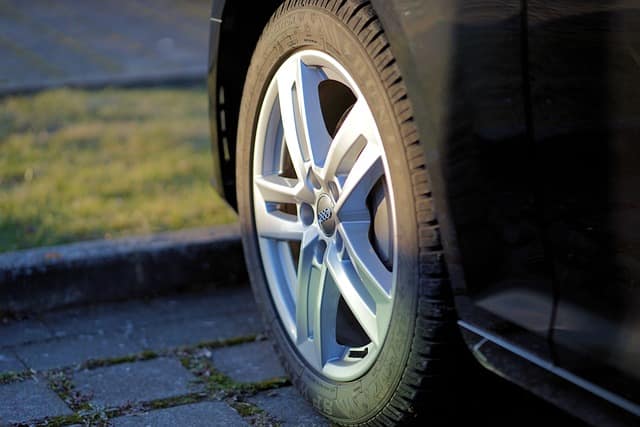
Inspect for Visible Damage
Look for any cuts, bulges, or sidewall cracks on each tire. Small cuts or abrasions might be harmless, but large cuts, bulges, or cracks are red flags, indicating potential weak spots. Bulges, in particular, show where the air has started to push through a weakened spot in the tire wall, which can lead to a blowout.
Check Tire Pressure
Correct tire pressure helps the car handle properly and can even improve fuel efficiency. Rental cars should ideally be at the right pressure, but it’s always wise to double-check. Many gas stations and some rental locations have free air pressure machines:
- Check the car’s door panel or the owner’s manual for the correct PSI (pounds per square inch) for each tire.
- If the tire is underinflated or overinflated, ask the rental agency to adjust it for you.
Don’t Forget the Spare
Most rental cars come equipped with a spare tire, and it’s smart to make sure yours is in good shape. Confirm that the spare is inflated and inspect it for any visible damage. While checking, also locate the jack and other tools required for changing a tire. It’s better to be prepared, even if you don’t anticipate needing it.
When to Ask the Rental Agency for Assistance
If you notice any of the following, reach out to the rental agency immediately:
- Extremely low tread: If the tire tread is very shallow or worn down, ask the agency to replace the car or provide new tires.
- Visible sidewall damage: Cuts or cracks in the sidewall can lead to tire failure.
- Severe underinflation: Tires that are significantly underinflated may indicate a slow leak or require professional inspection.
Remember, the agency’s priority should be your safety, and most reputable rental companies will address any tire issues promptly.
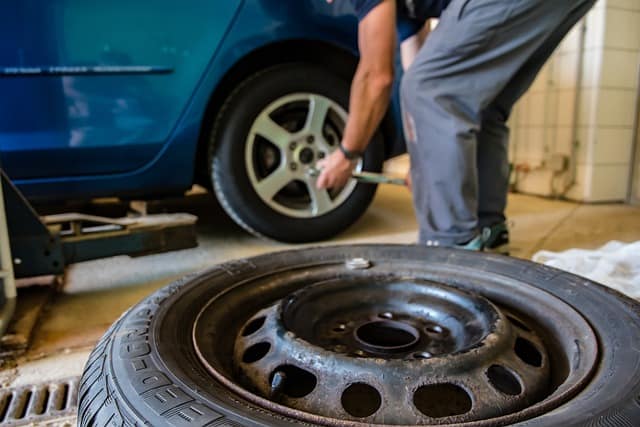
Additional Tips for a Safer Drive
Once you’ve inspected the tires, here are a few more tips to ensure a safe and enjoyable drive:
- Adjust Your Driving Style for Tire Condition: If the tires are in fair but not perfect condition, be mindful of your speed and avoid sudden braking. Gentler handling can reduce the risk of slipping or loss of control.
- Consider Road Conditions: If you’ll be driving on rough or unpaved roads, tire condition becomes even more crucial. Plan for this by inspecting the tires more thoroughly and asking the rental company about appropriate tires if you’re venturing off-road.
In Conclusion
A quick tire inspection may seem like a small step, but it can greatly enhance your safety, comfort, and overall experience on the road. Taking a few minutes to assess the tires before setting off can save you from unwanted surprises and ensure that your rental car is truly road-ready.…







 The first way to help your anxious pup is to give him CBD oil. CBD, or cannabidiol, is a compound found in the cannabis plant that has been known to produce calming and relaxing effects. When given in appropriate doses, it can reduce anxiety, stress levels, and fear responses in dogs. Many pet owners have reported significantly improved behavior after giving their pets CBD oil. If you plan to give your dog herbal remedies, you should first try giving them CBD oil.
The first way to help your anxious pup is to give him CBD oil. CBD, or cannabidiol, is a compound found in the cannabis plant that has been known to produce calming and relaxing effects. When given in appropriate doses, it can reduce anxiety, stress levels, and fear responses in dogs. Many pet owners have reported significantly improved behavior after giving their pets CBD oil. If you plan to give your dog herbal remedies, you should first try giving them CBD oil. The second way to help your anxious dog relax is by providing a calm, comfortable space for him. This could be a room in the house or a designated spot outside where he can go and unwind. Make sure to fill this area with familiar items like his bed or favorite toy, as well as some calming music or white noise that will soothe him. If he has a big bed, try putting it near a window so he can watch the world go by. This will give him something to focus on and distract him from his anxious thoughts.
The second way to help your anxious dog relax is by providing a calm, comfortable space for him. This could be a room in the house or a designated spot outside where he can go and unwind. Make sure to fill this area with familiar items like his bed or favorite toy, as well as some calming music or white noise that will soothe him. If he has a big bed, try putting it near a window so he can watch the world go by. This will give him something to focus on and distract him from his anxious thoughts. The fourth way to help your anxious dog relax is by rewarding him for good behavior. Giving your pup something he enjoys, like a favorite treat or toy, can be a great way to encourage the behaviors you want and reduce anxiety levels. This will also help to create positive associations with whatever is causing him stress and make it easier for him to remain calm in the future. Just make sure that you change up the reward so your pup doesn’t become bored with it. Find some tasty treats your pup loves, and use them as a reward for his behavior.
The fourth way to help your anxious dog relax is by rewarding him for good behavior. Giving your pup something he enjoys, like a favorite treat or toy, can be a great way to encourage the behaviors you want and reduce anxiety levels. This will also help to create positive associations with whatever is causing him stress and make it easier for him to remain calm in the future. Just make sure that you change up the reward so your pup doesn’t become bored with it. Find some tasty treats your pup loves, and use them as a reward for his behavior.
 One of the most important things you need to do when trying to pass a difficult exam is to learn how to study correctly. You can’t just try to cram everything at the last minute and expect to do well. It would help if you took the time to learn the material and understand it. It means creating a study schedule and sticking to it. It also means finding a study method that works for you.
One of the most important things you need to do when trying to pass a difficult exam is to learn how to study correctly. You can’t just try to cram everything at the last minute and expect to do well. It would help if you took the time to learn the material and understand it. It means creating a study schedule and sticking to it. It also means finding a study method that works for you. Still talking about tackling the stress that might come out during the exam week, getting enough sleep is essential to keep your body and soul fresh. When you’re well-rested, you’ll be able to focus better and retain information more easily. Ensure you’re getting at least eight hours of sleep every night during the week leading up to the exam.
Still talking about tackling the stress that might come out during the exam week, getting enough sleep is essential to keep your body and soul fresh. When you’re well-rested, you’ll be able to focus better and retain information more easily. Ensure you’re getting at least eight hours of sleep every night during the week leading up to the exam.

 Testimonials are another great way to show potential customers that you’re credible. You can ask customers who have had a positive experience to write a testimonial for your website or social media page. If you have any well-known customers, you can also ask them to write a testimonial.
Testimonials are another great way to show potential customers that you’re credible. You can ask customers who have had a positive experience to write a testimonial for your website or social media page. If you have any well-known customers, you can also ask them to write a testimonial.
 With the current population growth rate, the global demand for natural gas will continue to increase. The United States is one of the top consumers of this energy source, and it will only grow in popularity.
With the current population growth rate, the global demand for natural gas will continue to increase. The United States is one of the top consumers of this energy source, and it will only grow in popularity.
 Before you buy the best testosterone booster for men over 40 or any other health supplement, you should consider the quality of the product. Many supplements are made with low-quality ingredients and may not be effective. Make sure to research the company that makes the supplement and read reviews from other customers. There are several ways you can determine the quality of a supplement. Check the ingredient label on the product packaging to ensure it’s made with high-quality ingredients. If you see any ingredients that sound strange or unfamiliar, look them up and research what they are used for in supplements before buying them. In general, avoid products with too many different ingredients.
Before you buy the best testosterone booster for men over 40 or any other health supplement, you should consider the quality of the product. Many supplements are made with low-quality ingredients and may not be effective. Make sure to research the company that makes the supplement and read reviews from other customers. There are several ways you can determine the quality of a supplement. Check the ingredient label on the product packaging to ensure it’s made with high-quality ingredients. If you see any ingredients that sound strange or unfamiliar, look them up and research what they are used for in supplements before buying them. In general, avoid products with too many different ingredients. The last thing you want to do is overspend on a health supplement. Compare prices between different online retailers to get the best deal. Some supplements are available at your local pharmacy or grocery store, but they may be more expensive than ordering them online. Be sure to compare prices and read reviews before making a purchase. Consider the quality, price, and reputation of a product before purchasing it. If there are any questions about these factors on your mind, don’t hesitate to reach out to us for more information or guidance.…
The last thing you want to do is overspend on a health supplement. Compare prices between different online retailers to get the best deal. Some supplements are available at your local pharmacy or grocery store, but they may be more expensive than ordering them online. Be sure to compare prices and read reviews before making a purchase. Consider the quality, price, and reputation of a product before purchasing it. If there are any questions about these factors on your mind, don’t hesitate to reach out to us for more information or guidance.…
 You should first decide what type of campaign you want to run. Are you going to be strictly a political consulting firm, or are you also interested in running campaigns? It would help if you considered that the latter would mean more work, but it could also have more significant returns.
You should first decide what type of campaign you want to run. Are you going to be strictly a political consulting firm, or are you also interested in running campaigns? It would help if you considered that the latter would mean more work, but it could also have more significant returns. As you need clients to win races, you will also need to identify and network with key players in the area. These individuals can provide critical financial or political support to make or break a campaign. They may also be able to connect you with potential clients.
As you need clients to win races, you will also need to identify and network with key players in the area. These individuals can provide critical financial or political support to make or break a campaign. They may also be able to connect you with potential clients.
 When choosing the natural replacements for Adderall, it is vital to consider the ingredients. In this regard, you need to ensure that the ingredients used in these products are entirely natural and organic. Look for those containing no preservatives or additives whatsoever, as they can make a massive difference concerning your overall health and wellbeing.
When choosing the natural replacements for Adderall, it is vital to consider the ingredients. In this regard, you need to ensure that the ingredients used in these products are entirely natural and organic. Look for those containing no preservatives or additives whatsoever, as they can make a massive difference concerning your overall health and wellbeing. On top of checking reviews, you should also ensure that your product is certified. This means it has met all the required standards for its use and will not cause any adverse effect on the body when used according to instructions.
On top of checking reviews, you should also ensure that your product is certified. This means it has met all the required standards for its use and will not cause any adverse effect on the body when used according to instructions.
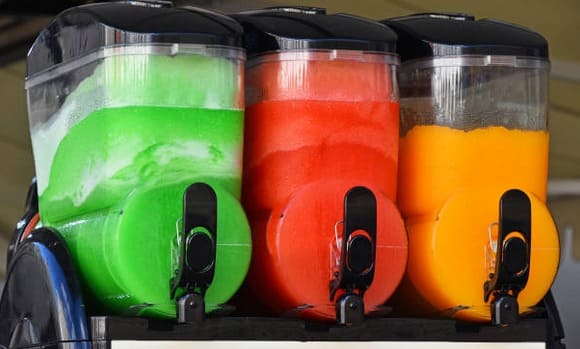 Before you make your final decision on the best slushie machine to buy, you should know the number of slushies that you need to be producing. If you plan to set up a slushie business, it is essential to see the number of customers you need to serve. In addition, it will help you to know the size of the machine that you need.
Before you make your final decision on the best slushie machine to buy, you should know the number of slushies that you need to be producing. If you plan to set up a slushie business, it is essential to see the number of customers you need to serve. In addition, it will help you to know the size of the machine that you need.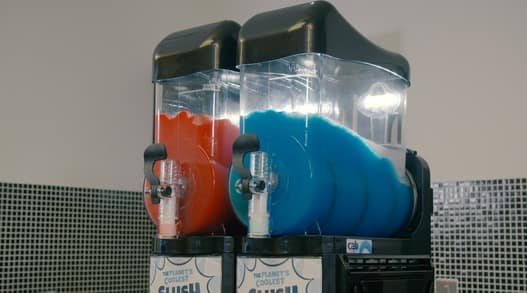 Before purchasing a slushie machine, consider keeping high standards to ensure you buy a durable device that will serve the purpose. Even though the best quality machines are expensive, consider making your decision to investing in them because you will get returns over time. The best quality slushie machines are durable, and by purchasing one, you will get the value for your money.
Before purchasing a slushie machine, consider keeping high standards to ensure you buy a durable device that will serve the purpose. Even though the best quality machines are expensive, consider making your decision to investing in them because you will get returns over time. The best quality slushie machines are durable, and by purchasing one, you will get the value for your money.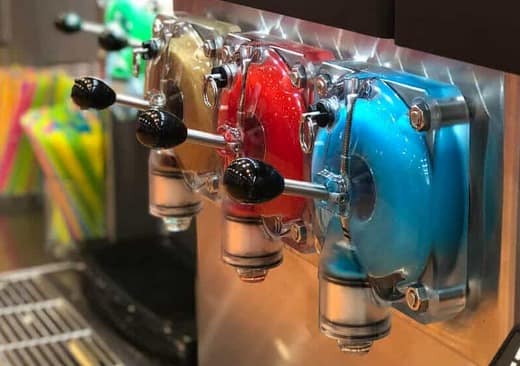 There are different types of slushie machines that can handle other drinks. However, most slush machines are made of stainless steel, giving them the rigidity to carry loaded tanks. The various designs and styles of slushie machines will depend on the manufacturers. Some slushie machines can handle alcoholic or dairy products, and such machines need routine cleaning.
There are different types of slushie machines that can handle other drinks. However, most slush machines are made of stainless steel, giving them the rigidity to carry loaded tanks. The various designs and styles of slushie machines will depend on the manufacturers. Some slushie machines can handle alcoholic or dairy products, and such machines need routine cleaning.


 If you are running a large business, you need to have warehouses. Therefore, it is essential to ensure you arrange them properly to make it easy to trace all types of products in it. That is why you will notice that a disorganized warehouse creates various problems, such as staying on top of inventory.
If you are running a large business, you need to have warehouses. Therefore, it is essential to ensure you arrange them properly to make it easy to trace all types of products in it. That is why you will notice that a disorganized warehouse creates various problems, such as staying on top of inventory. When your business stock is organized with the perfect barcodes, it becomes a deterrent for potential theft. But, on the other hand, it becomes hard to lose or misplace stock. With stock management software, you will have clear visibility of the status and whereabouts of all your goods. Therefore, it will be easy to identify any misplaced products or errors.
When your business stock is organized with the perfect barcodes, it becomes a deterrent for potential theft. But, on the other hand, it becomes hard to lose or misplace stock. With stock management software, you will have clear visibility of the status and whereabouts of all your goods. Therefore, it will be easy to identify any misplaced products or errors.
 If you want to start an online business, note that there are various benefits you will get. For example, you will get an opportunity to experiment with trial and error before investing too much of your money and time.
If you want to start an online business, note that there are various benefits you will get. For example, you will get an opportunity to experiment with trial and error before investing too much of your money and time. Setting up and running a business for the first time can be a real challenge. But if you do not want to encounter some of these challenges, it is crucial to operate online. By doing this, you will eliminate a lot of hassle and stress involved. In other words, managing and controlling online businesses can be easy these days due to various business management applications they can install on their devices.
Setting up and running a business for the first time can be a real challenge. But if you do not want to encounter some of these challenges, it is crucial to operate online. By doing this, you will eliminate a lot of hassle and stress involved. In other words, managing and controlling online businesses can be easy these days due to various business management applications they can install on their devices.



 Vaping is a relatively new way of enjoying cannabis. It involves using battery-powered devices to heat the weed almost to the point of combustion. As a result, the weed releases the cannabinoids plus other compounds and they mix with the air, forming a vapor which the user inhales. Unlike smoking, vaping does not give out any smoke, is not irritating to the lungs and is more discreet.
Vaping is a relatively new way of enjoying cannabis. It involves using battery-powered devices to heat the weed almost to the point of combustion. As a result, the weed releases the cannabinoids plus other compounds and they mix with the air, forming a vapor which the user inhales. Unlike smoking, vaping does not give out any smoke, is not irritating to the lungs and is more discreet. For several decades, people have consumed marijuana brownies and nowadays, users are consuming weed added to many other foodstuffs. Moreover, the legalization of marijuana for medical uses in most countries and recreation purposes in some has seen cannabis more edibles produced and marketed.
For several decades, people have consumed marijuana brownies and nowadays, users are consuming weed added to many other foodstuffs. Moreover, the legalization of marijuana for medical uses in most countries and recreation purposes in some has seen cannabis more edibles produced and marketed.






 When dealing with individuals and other companies that supply you with merchandise and offer some services, it would be best to ensure you have contracts with them. You must avoid assuming that all parties will act fairly because you pay them, honors your part of the bargain, and so on. The best thing is to have all things detailed in contracts which your company and those vendors sign and keep copies. In case they violate any of the terms, like a service provider pulling midway a project, the specified consequences should apply, thus protecting your interests.
When dealing with individuals and other companies that supply you with merchandise and offer some services, it would be best to ensure you have contracts with them. You must avoid assuming that all parties will act fairly because you pay them, honors your part of the bargain, and so on. The best thing is to have all things detailed in contracts which your company and those vendors sign and keep copies. In case they violate any of the terms, like a service provider pulling midway a project, the specified consequences should apply, thus protecting your interests. Although when two or more persons come together and agree to form are usually on talking terms and most likely friends, things may change and necessitate parting. Even if it is not getting separated, there can arise disputes in running the business, and there be a need for a reference document on how to handle the issues. An agreement between the business partners can help to settle the matters. Because separations are usually messy, if there is no document to guide them, things can go haywire.
Although when two or more persons come together and agree to form are usually on talking terms and most likely friends, things may change and necessitate parting. Even if it is not getting separated, there can arise disputes in running the business, and there be a need for a reference document on how to handle the issues. An agreement between the business partners can help to settle the matters. Because separations are usually messy, if there is no document to guide them, things can go haywire.
 an instrument, and you are convinced that a violin is a good option. Certainly, the violin is the smallest string instrument, so it becomes the perfect option to start in the world of music.
an instrument, and you are convinced that a violin is a good option. Certainly, the violin is the smallest string instrument, so it becomes the perfect option to start in the world of music.

 Capabilities
Capabilities

 Nowadays, there are different services and websites that can help you determine the value of your classic car. Remember that the estimates vary, and the value of your car depends on the condition, buyer, and time. You can even find buyers who are ready to pay more because your car reminds them of their first cars. It is advisable to set the selling price of the car a little higher than the estimated price. This is necessary to create room for negotiation.
Nowadays, there are different services and websites that can help you determine the value of your classic car. Remember that the estimates vary, and the value of your car depends on the condition, buyer, and time. You can even find buyers who are ready to pay more because your car reminds them of their first cars. It is advisable to set the selling price of the car a little higher than the estimated price. This is necessary to create room for negotiation.

 ISO 22000 offers efficient and comprehensive control of food safety and health. It helps minimize the experience of health and low-quality foods. Ideally, it offers a food safety audit by a third-party consultant. When you become ISO 22000 certified, your increase trust by the general public and in the industry. As a result, you may acquire a lot of customers, increase sales, and generate more profits. In addition, you can eliminate and control food safety risks. By being certified, you have to keep improving your processes and ensure you supply safe food.…
ISO 22000 offers efficient and comprehensive control of food safety and health. It helps minimize the experience of health and low-quality foods. Ideally, it offers a food safety audit by a third-party consultant. When you become ISO 22000 certified, your increase trust by the general public and in the industry. As a result, you may acquire a lot of customers, increase sales, and generate more profits. In addition, you can eliminate and control food safety risks. By being certified, you have to keep improving your processes and ensure you supply safe food.…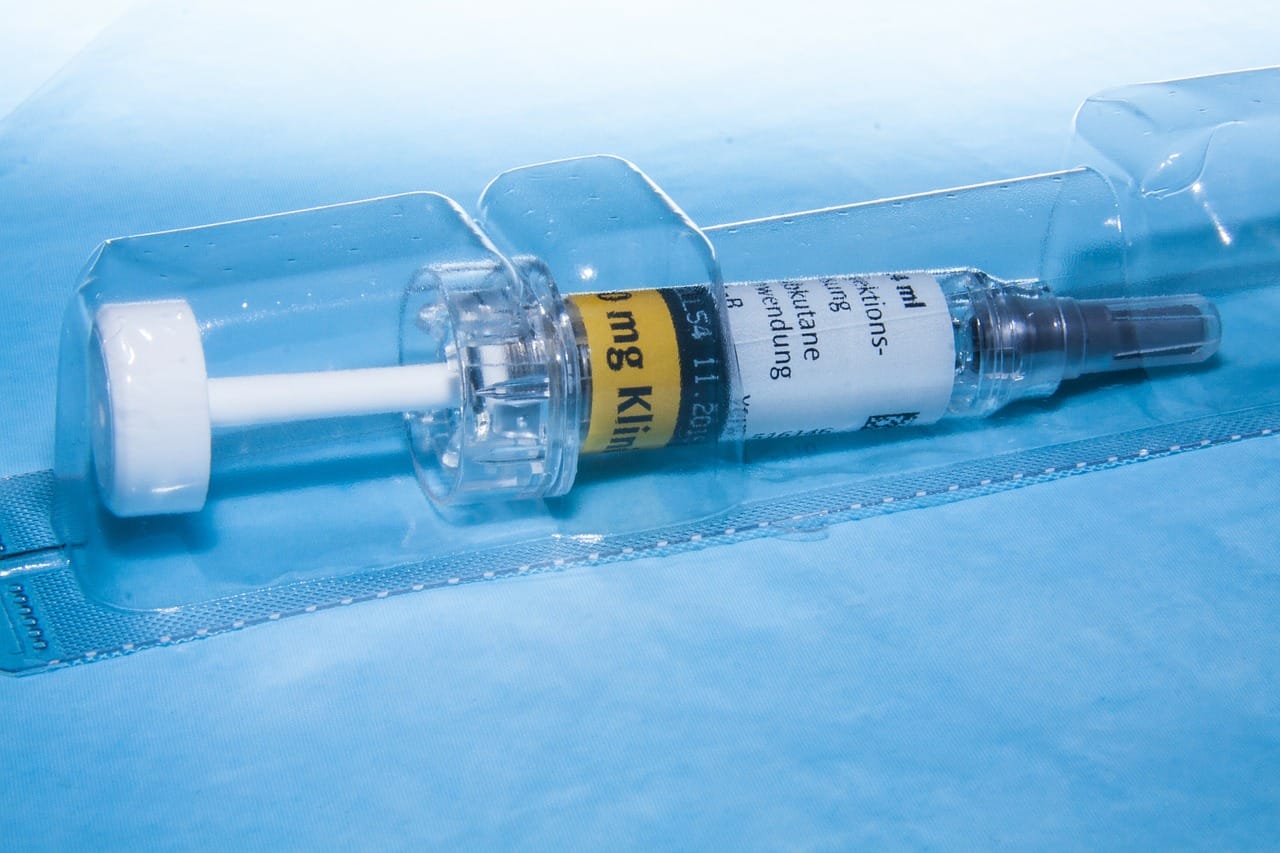 Post-market surveillance (PMS) refers to a framework the regulates manufacturers of medical devices post-market. Medical Device Regulation lays special emphasis regarding clinical data and safety-related data. The performance of CE-marked products is monitored closely to make it easier to identify any risks related to the practical use of the products.
Post-market surveillance (PMS) refers to a framework the regulates manufacturers of medical devices post-market. Medical Device Regulation lays special emphasis regarding clinical data and safety-related data. The performance of CE-marked products is monitored closely to make it easier to identify any risks related to the practical use of the products.





 Not all online websites provide the right conditions for safe internet shopping. Thus, it is a good idea to limit your shopping to only encrypted websites and carry out transactions on a trusted Wi-Fi network. Check for a padlock symbol on the URL bar. Following these steps is vital to ensure that your personal information is transferred in the safest way possible.
Not all online websites provide the right conditions for safe internet shopping. Thus, it is a good idea to limit your shopping to only encrypted websites and carry out transactions on a trusted Wi-Fi network. Check for a padlock symbol on the URL bar. Following these steps is vital to ensure that your personal information is transferred in the safest way possible. The most frustrating part of online shopping is shipping costs. You can find websites that provide free shipping based on the amount a buyer spends. You should choose websites that provide cost-saving deals or free shipping. Other than the cost of shipping, you also need to consider the shipping time. Although free shipping is good, it is useless if your item does not arrive on time. Most online merchants have special deals for quicker shipping. For instance, Amazon Prime allows buyers to pay a flat annual fee for free shipping on all their orders. Such options can pay for themselves.…
The most frustrating part of online shopping is shipping costs. You can find websites that provide free shipping based on the amount a buyer spends. You should choose websites that provide cost-saving deals or free shipping. Other than the cost of shipping, you also need to consider the shipping time. Although free shipping is good, it is useless if your item does not arrive on time. Most online merchants have special deals for quicker shipping. For instance, Amazon Prime allows buyers to pay a flat annual fee for free shipping on all their orders. Such options can pay for themselves.…
 There are different ways you can use a wireless dog fence. For instance, you can use it at the perimeter of the property to enclose your farm. Also, you can use it to create a dog zone, or stop dogs from getting into your garden, keep dogs away from livestock or chickens. You need to take into account the area you want to enclose. You can find a dog fence with a capacity of 10 acres.
There are different ways you can use a wireless dog fence. For instance, you can use it at the perimeter of the property to enclose your farm. Also, you can use it to create a dog zone, or stop dogs from getting into your garden, keep dogs away from livestock or chickens. You need to take into account the area you want to enclose. You can find a dog fence with a capacity of 10 acres. As you know, collars are not appropriate for the dogs. You need to consider the size of your dog when buying dog fences. For instance, if your dog is less than 10 pounds, you should get a collar designed for the smaller dogs. That is necessary because the size of the collar corresponds to the magnitude of the shock. Thus, if your dog is large and stubborn, then you need a collar that provides a more intense corrective shock. You should note that not all the dog fences can support them and others have collar variations.
As you know, collars are not appropriate for the dogs. You need to consider the size of your dog when buying dog fences. For instance, if your dog is less than 10 pounds, you should get a collar designed for the smaller dogs. That is necessary because the size of the collar corresponds to the magnitude of the shock. Thus, if your dog is large and stubborn, then you need a collar that provides a more intense corrective shock. You should note that not all the dog fences can support them and others have collar variations.
 Dogs with normal hair and skin are the easiest to get an ideal shampoo product. They can range from low-cost products to expensive medicated options. Products that are marked as a conditioner and shampoo are ideal if you want your dog to smell fresh. Also, various shampoos are useful for pets that tend to get smelly.
Dogs with normal hair and skin are the easiest to get an ideal shampoo product. They can range from low-cost products to expensive medicated options. Products that are marked as a conditioner and shampoo are ideal if you want your dog to smell fresh. Also, various shampoos are useful for pets that tend to get smelly.





 Water exploration can mean many things. You can fish with your boys, while your wife and your daughters dive around to learn about aquatic animals and their ecosystem. Introducing kids to nature and educating them about the importance of conserving natural habitats are not only doing the right thing but also saving the planet.
Water exploration can mean many things. You can fish with your boys, while your wife and your daughters dive around to learn about aquatic animals and their ecosystem. Introducing kids to nature and educating them about the importance of conserving natural habitats are not only doing the right thing but also saving the planet. Visiting the countrysides and experiencing living in a cabin for a while will give you and your family an excellent chance to bond with each other. First, make sure that your family members do not have any unfinished works that can bother them during the retreat. Second, ask them to leave all of their
Visiting the countrysides and experiencing living in a cabin for a while will give you and your family an excellent chance to bond with each other. First, make sure that your family members do not have any unfinished works that can bother them during the retreat. Second, ask them to leave all of their 



 minimal. You will get real evidence of all the recorded ongoings. Cloud storage is also the best option because it offers unlimited storage capacity. Those are many reasons why you should opt for a CCTV monitoring system.…
minimal. You will get real evidence of all the recorded ongoings. Cloud storage is also the best option because it offers unlimited storage capacity. Those are many reasons why you should opt for a CCTV monitoring system.…
 sailors. In case you have friends who also sail and own yachts, you can choose to ask for recommendations from them. It is obvious that out of them all, there are those who have had experience of repairing their yachts. The good thing about asking for recommendations is that you will easily get to understand the quality of services you will get from the repair professionals.
sailors. In case you have friends who also sail and own yachts, you can choose to ask for recommendations from them. It is obvious that out of them all, there are those who have had experience of repairing their yachts. The good thing about asking for recommendations is that you will easily get to understand the quality of services you will get from the repair professionals. Since the world has gone digital in all aspects because of the internet, then you can embrace it. You can check on the internet and see some of the best yacht repair professionals. The internet is reliable in giving you the best repair experts because you will even get to know the quality of serves the experts offer. Most yacht repair services are rated on the internet are those that have received positive feedback from their past clients. Therefore you should always choose the yacht repair professionals who are well rated.
Since the world has gone digital in all aspects because of the internet, then you can embrace it. You can check on the internet and see some of the best yacht repair professionals. The internet is reliable in giving you the best repair experts because you will even get to know the quality of serves the experts offer. Most yacht repair services are rated on the internet are those that have received positive feedback from their past clients. Therefore you should always choose the yacht repair professionals who are well rated.
 As a responsible parent, you need to ensure that your baby is comfortable. Understand that not all diapers are good for your baby. Some may cause skin irritations while others might just be uncomfortable. What this, therefore, tells you is that you need to do your homework before you decide on the types of diapers that you will buy for your child. There are many factors that you will need to consider whenever you go out there to buy diapers for your baby.
As a responsible parent, you need to ensure that your baby is comfortable. Understand that not all diapers are good for your baby. Some may cause skin irritations while others might just be uncomfortable. What this, therefore, tells you is that you need to do your homework before you decide on the types of diapers that you will buy for your child. There are many factors that you will need to consider whenever you go out there to buy diapers for your baby. You also need to consider the cost of the diapers. Nowadays, there are several brands with different costs. If you are among the few people who love to buy cheap products, you should resist the urge as far as diapers are concerned. Buying cheap diapers for your baby can cause you a lot of problems. Can you imagine a situation where your baby is sick, and you are forced to spend a lot of cash to seek treatment? Those are some of the scenarios that you would want to avoid at all cost. You will always get what you pay for.…
You also need to consider the cost of the diapers. Nowadays, there are several brands with different costs. If you are among the few people who love to buy cheap products, you should resist the urge as far as diapers are concerned. Buying cheap diapers for your baby can cause you a lot of problems. Can you imagine a situation where your baby is sick, and you are forced to spend a lot of cash to seek treatment? Those are some of the scenarios that you would want to avoid at all cost. You will always get what you pay for.…
 The first thing that you need to do is to evaluate your finances. Do you think that you have enough money to buy the house of your dream? If yes, then you can proceed and find that house that you think will perfectly meet your needs and requirements. On the other hand, if you realize that the finances at your disposal might not be enough, you might want to consider going for a mortgage plan. It is, however, good to understand that mortgages are not always the best option.
The first thing that you need to do is to evaluate your finances. Do you think that you have enough money to buy the house of your dream? If yes, then you can proceed and find that house that you think will perfectly meet your needs and requirements. On the other hand, if you realize that the finances at your disposal might not be enough, you might want to consider going for a mortgage plan. It is, however, good to understand that mortgages are not always the best option. There are several factors that influence the cost of a home. Understanding some of these factors is very important as it will help you to buy the house that you can comfortably afford. Doing a lot of price comparison and research is highly recommended.…
There are several factors that influence the cost of a home. Understanding some of these factors is very important as it will help you to buy the house that you can comfortably afford. Doing a lot of price comparison and research is highly recommended.…

